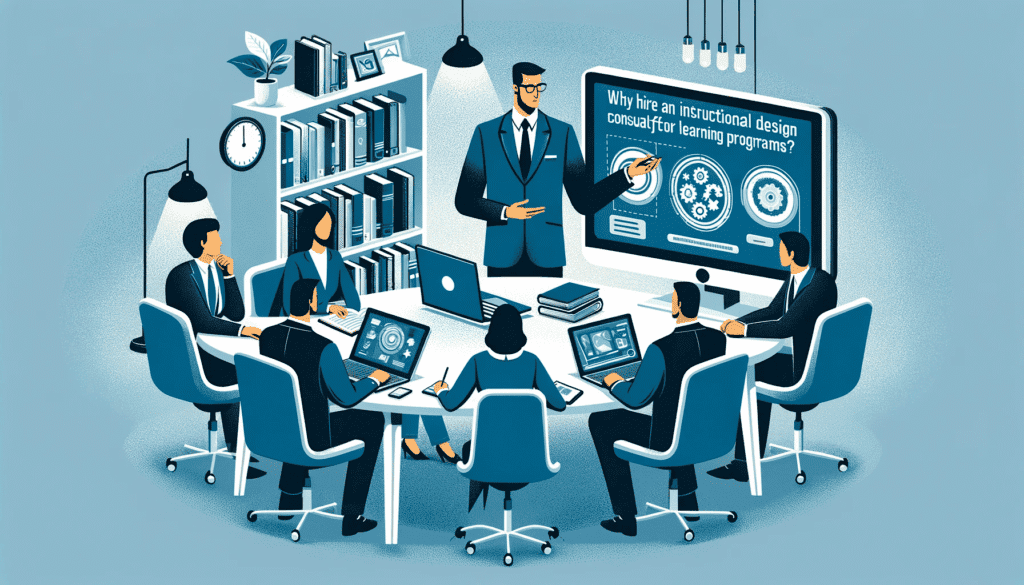Case Study: How Instructional Design Consultancy Revolutionized Federal Government Employee Onboarding
Introduction
Employee onboarding is a critical period that can set the tone for a new hire’s career within an organization. In federal government sectors, where the complexity of roles and the weight of responsibilities are substantial, the challenges of onboarding are magnified. New employees must navigate a labyrinth of legal compliances, procedural training, and often a mountain of bureaucratic processes, all while trying to assimilate into the organizational culture.
This case study zeroes in on a pivotal turning point for a particular federal department plagued disengagement rates among new hires. The mission was clear: to overhaul their onboarding program, making it not just informative but also engaging and conducive to long-term employee retention.
The Onboarding Challenge
Prior to the intervention, the department’s onboarding process was a traditional affair: a series of dry presentations, thick manuals, and a one-size-fits-all approach that failed to acknowledge diverse learning styles and the varying backgrounds of new employees. Engagement was at an all-time low, with many employees unable to recall crucial information weeks after training. The department’s one-dimensional approach to training led to a passive learning experience that neither inspired nor equipped new hires to perform at their best.
The ramifications of such an ineffective process were far-reaching. Employees struggled to feel a sense of belonging or purpose, morale was consistently low, and the lack of a robust onboarding foundation led to preventable mistakes and a palpable impact on the department’s overall efficiency. The need for a dynamic, impactful onboarding experience was evident, and the collaboration with an instructional design consultant was initiated to address these deep-rooted issues.
Strategic Overhaul and Implementation
Upon a thorough evaluation of the existing onboarding program, it became apparent that the content, while comprehensive, lacked engagement and failed to accommodate diverse learning preferences. My assessment also revealed a gap in the application of adult learning principles, which are crucial in crafting educational experiences for professional settings.
In reimagining the program, I adopted a multi-faceted approach, strategically incorporating elements such as interactive e-learning modules, gamified learning scenarios, and immersive simulations that mirror real-life government tasks.
Results and Evaluation:
The revamped onboarding program was met with resounding success. Test scores reflected deeper comprehension, with a 40% increase in pass rates and a significant improvement in long-term retention evidenced by follow-up assessments.
Employee feedback underscored the quantitative data. New hires reported feeling more confident and prepared to take on their roles, citing the interactive and personalized nature of the training as key factors. Testimonials praised the program for its relevance and for providing a sense of empowerment and readiness that was previously lacking.
The department noted not just an uptick in onboarding satisfaction but also a tangible improvement in early job performance and a decrease in early turnover rates. The strategic overhaul of the onboarding program not only elevated the initial employee experience but also set a new standard for government training programs.
Case Study Analysis
The project’s triumph can be traced back to several pivotal factors. First, the application of a learner-centered design was a game-changer. By placing the end-user at the heart of the program, the content became more relatable and engaging, which directly influenced the learners’ enthusiasm and willingness to participate.
Second, the integration of feedback mechanisms throughout the program enabled continuous improvement—a loop where employees’ insights and experiences helped refine the content further. This dynamic approach ensured that the training remained relevant and up-to-date with the ever-evolving policies and procedures of the federal government.
Third, the adoption of cutting-edge technology played a significant role. The utilization of adaptive learning systems and mobile applications not only accommodated diverse learning styles but also encouraged self-paced learning, allowing employees to engage with the material at times most convenient for them.
The scalability of these strategies lies in their adaptability. Each element, from the e-learning modules to the adaptive assessments, was designed with flexibility in mind, allowing for easy updates and modifications to suit changing regulations and learning needs. As for sustainability, the digital nature of the program ensures that resources can be reused and recycled, reducing the need for constant reinvestment.
Conclusion
For organizations contemplating the merits of instructional design consultancy, the insights from this case study serve as a practical example of its transformative potential. To explore this subject in greater depth, consider reading the blog post “Why Hire an Instructional Design Consultant for Your Learning Programs?,” where you’ll find a comprehensive discussion on the value an expert consultant can bring to your educational strategies, especially within government and corporate settings.
Delve deeper into the practical benefits of instructional design consultancy by watching the insightful video, “The Value an Instructional Design Consultant Brings to Your Team.” This visual presentation will walk you through real-life scenarios showcasing how an expert consultant can make a tangible difference in team development and learning efficiency.
This case study illustrates the profound impact that expert instructional design consultancy can have on an organization’s onboarding program, particularly within the structured frameworks of federal government departments. The transformation witnessed in this scenario underscores the power of strategic educational planning and its ability to significantly enhance the onboarding experience, directly reflecting in employee engagement and proficiency.
- Personalized Consultation: Ready to revolutionize your onboarding process? Schedule a consultation and start paving the way towards an outstanding learning experience for your new hires.
- Explore Our Services: To understand the full spectrum of our instructional design services and how they can benefit your organization, visit our services page. Let us help you turn your educational challenges into success stories.


